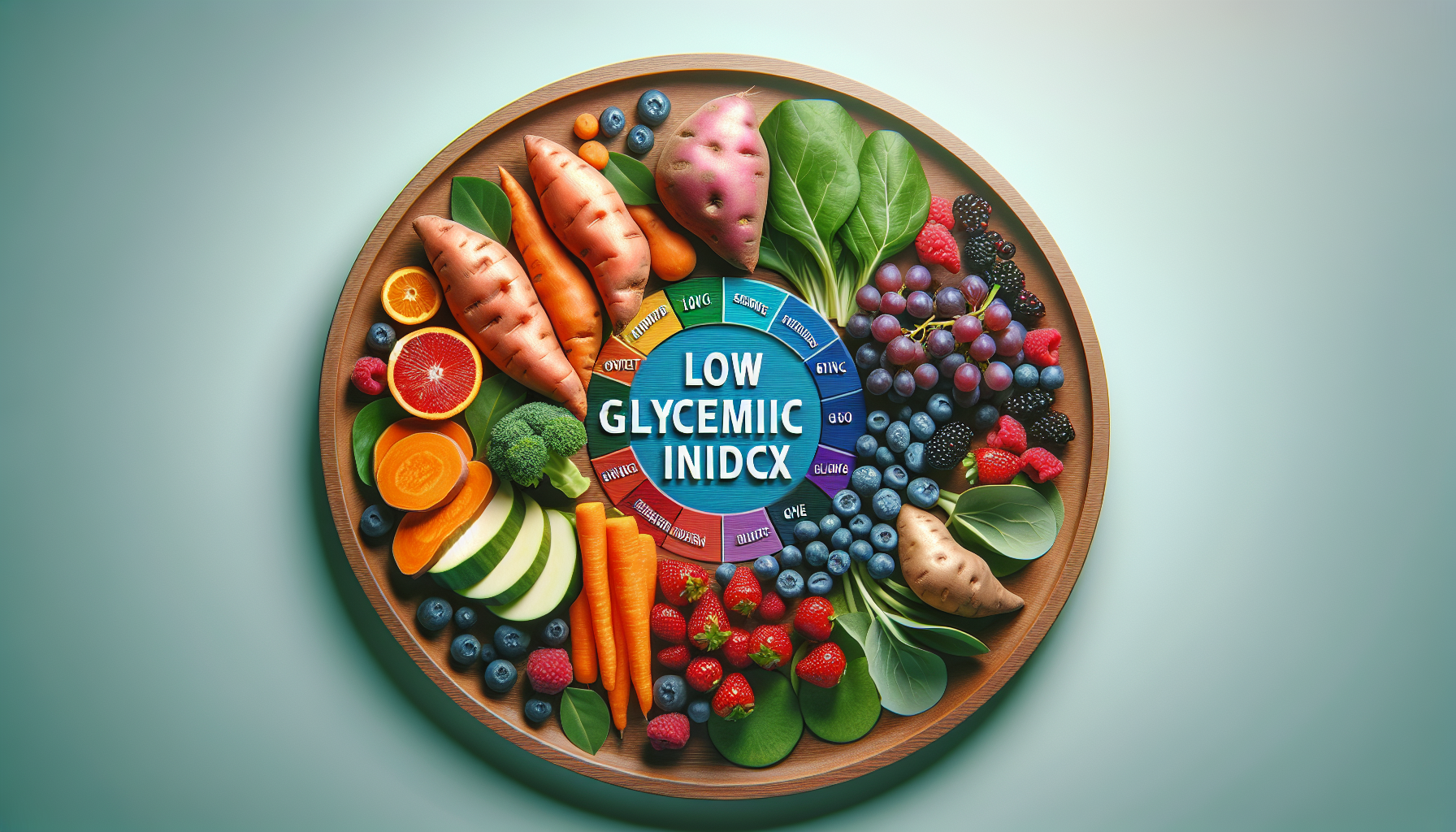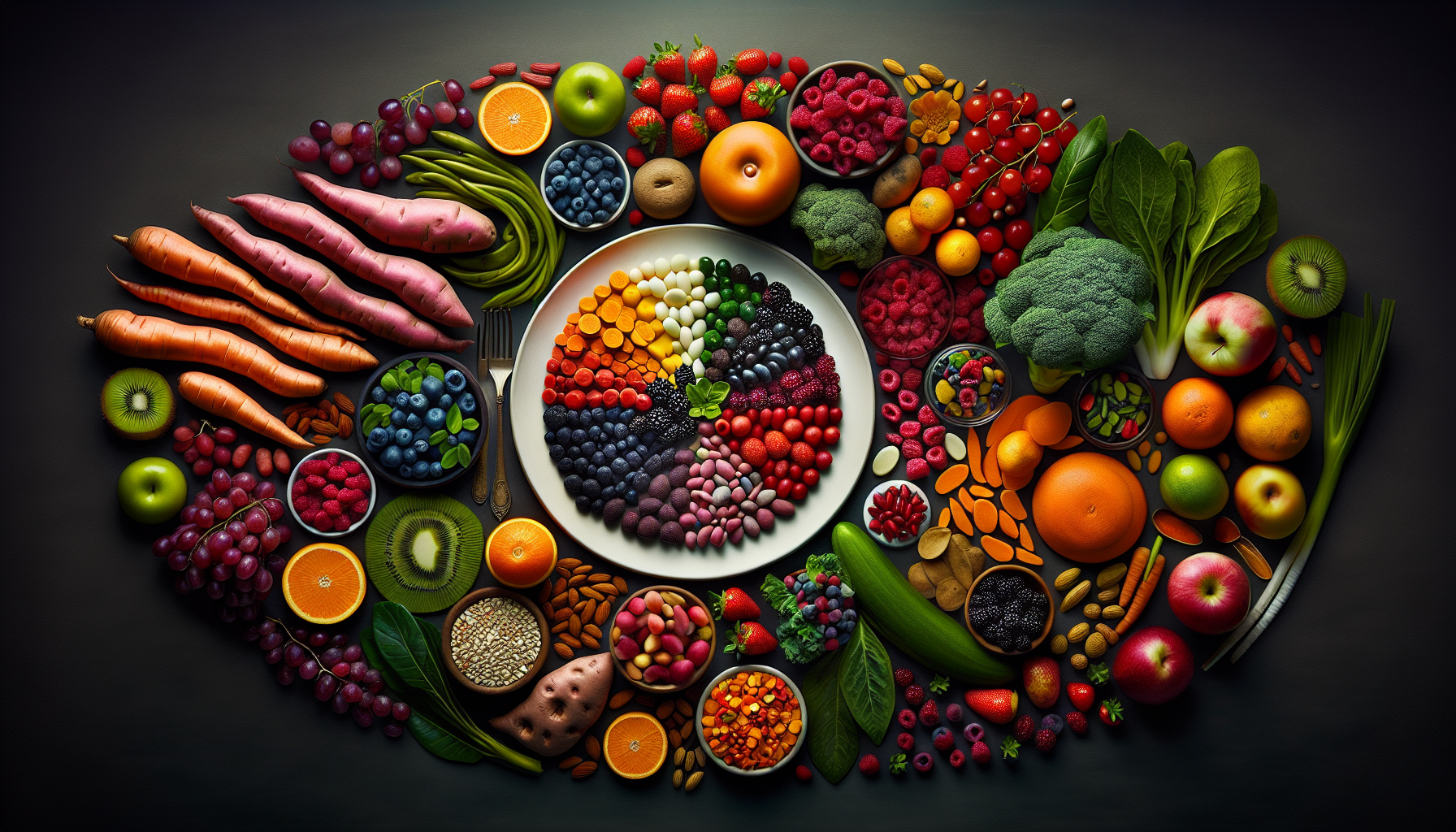Are you looking to improve your weight management? Understanding the glycemic index can be a valuable tool in achieving your goals. The glycemic index measures how quickly carbohydrates in food raise blood sugar levels. Foods with a high glycemic index are quickly digested and cause a rapid spike in blood sugar, while foods with a low glycemic index are digested more slowly, resulting in a gradual increase in blood sugar. Incorporating foods with a low glycemic index into your diet can help control hunger, increase satiety, and regulate energy levels. However, it’s important to remember that everyone’s dietary needs are different, so consulting a health professional before making any significant changes to your diet or exercise routine is always a wise decision.
Discover the Ultimate Weight Loss Secrets Here!
What is Glycemic Index?
Definition
The glycemic index (GI) is a ranking system that measures the impact of carbohydrate-rich foods on blood sugar levels. It assigns a numerical value to each food, indicating how quickly it raises blood glucose levels compared to a reference food, usually pure glucose or white bread. Foods with a high GI cause a rapid spike in blood sugar levels, while those with a low GI result in a slower, more gradual increase.
How it is measured
The glycemic index is determined through clinical trials in which participants consume measured amounts of specific foods and then have their blood glucose levels monitored over a set period of time. The data collected is used to calculate the glycemic index value for each food. The GI scale ranges from 0 to 100, with a higher value indicating a greater impact on blood sugar levels.
Why is Glycemic Index Important for Weight Management?
Impact on blood sugar levels
The glycemic index is crucial for weight management because it helps regulate blood sugar levels. When you consume high GI foods, your blood glucose levels spike, causing a rapid release of insulin. Insulin is a hormone that regulates blood sugar levels by facilitating the transport of glucose into cells for energy or storage. However, when insulin levels are consistently elevated due to consuming high GI foods, it can lead to weight gain and an increased risk of developing conditions like type 2 diabetes.
Effect on satiety
Another reason why the glycemic index is important for weight management is its influence on satiety, the feeling of fullness and satisfaction after eating. High GI foods tend to be quickly digested and absorbed, leading to a rapid rise and fall in blood sugar levels. This can leave you feeling hungry again shortly after eating, leading to overeating and making it more challenging to maintain a healthy weight. In contrast, low GI foods are digested more slowly, providing a longer-lasting feeling of fullness and reducing the likelihood of overeating.
Role in weight gain and weight loss
The glycemic index also plays a role in weight gain and weight loss. Consumption of high GI foods can contribute to weight gain since they cause rapid and pronounced fluctuations in blood glucose levels. These fluctuations can stimulate hunger and cravings for more high GI foods, leading to a cycle of overeating and weight gain. On the other hand, low GI foods can support weight loss efforts by providing sustained energy levels, promoting feelings of fullness, and reducing the likelihood of overeating.
Click Here for Proven Fat-Burning Strategies!
Understanding Low and High GI Foods
Low GI foods
Low GI foods are those that have a glycemic index value below 55. These foods are digested and absorbed slowly, resulting in a gradual increase in blood glucose levels. Examples of low GI foods include most vegetables, beans, lentils, whole grains, nuts, and seeds. These foods promote stable blood sugar levels, sustained energy, and improved satiety, making them beneficial for weight management.
High GI foods
High GI foods have a glycemic index value above 70. These foods are quickly digested and absorbed, causing a rapid increase in blood sugar levels. Some examples of high GI foods include white bread, white rice, sugary cereals, sweets, soda, and processed snacks. Consuming high GI foods in excess can lead to weight gain, increased hunger, and an increased risk of chronic diseases like obesity and type 2 diabetes. It is important to consume high GI foods in moderation and balance them with low GI options.
Factors That Influence Glycemic Index
Ripeness of fruits and vegetables
The ripeness of fruits and vegetables can impact their glycemic index. Generally, unripe fruits and vegetables have a lower GI compared to ripe ones. For example, a banana that is still mostly green will have a lower GI than a fully ripe, yellow banana. As fruits and vegetables ripen, their starches convert into sugars, leading to a higher GI. Therefore, if you are aiming to choose low GI options, opt for fruits and vegetables that are less ripe.
Cooking methods
The cooking method used can affect the glycemic index of certain foods. For example, cooking pasta for a shorter period of time results in a higher GI compared to cooking it al dente. Overcooking or high-temperature cooking methods such as deep-frying can also increase the glycemic index of foods. On the other hand, methods like boiling, steaming, and baking at lower temperatures are less likely to significantly alter the glycemic index.
Processing and refining
The degree of processing and refining that a food undergoes can impact its glycemic index. Generally, processed and refined foods tend to have a higher GI compared to their whole food counterparts. For example, white bread, which is made from refined flour, has a higher GI than whole grain bread. This is because the refining process removes the fibrous outer layers of grains, resulting in faster digestion and a higher glycemic index.
Fiber content
Fiber is an essential component of a low glycemic diet. Foods that are rich in fiber typically have a lower glycemic index. This is because fiber slows down the digestion and absorption of carbohydrates, preventing rapid spikes in blood glucose levels. Whole grains, legumes, fruits, and vegetables are excellent sources of dietary fiber. Incorporating these fiber-rich foods into your diet can help lower the overall glycemic impact of your meals.
Unlock Your Path to a Healthier You!
Benefits of Choosing Low GI Foods
Stable blood sugar levels
One of the key benefits of choosing low GI foods is that they promote stable blood sugar levels. By avoiding large spikes and dips in blood glucose levels, you can maintain consistent energy levels throughout the day. This can help prevent energy crashes, reduce fatigue, and improve overall mood and cognitive function.
Improved satiety and appetite control
Low GI foods have a positive impact on satiety and appetite control. The gradual release of glucose into the bloodstream helps you feel full for a longer period of time, reducing the likelihood of overeating or snacking between meals. This can be particularly beneficial for individuals who struggle with portion control or have difficulty managing cravings.
Sustained energy levels
Choosing low GI foods provides a steady and sustained supply of energy. Since these foods are digested and absorbed more slowly, they provide a gradual release of glucose into the bloodstream, resulting in a longer-lasting fuel source. This can enhance athletic performance, support physical activity, and prevent feelings of fatigue or sluggishness.
Weight management
Incorporating low GI foods into your diet can be an effective strategy for weight management. Low GI foods tend to be more nutrient-dense, providing a richer array of vitamins, minerals, and antioxidants. They also help regulate blood sugar levels, promote satiety, and reduce the risk of overeating. By incorporating more low GI foods into your meals, you can maintain a healthy weight and reduce the risk of chronic diseases associated with obesity.
How to Incorporate Low GI Foods into the Diet
Choosing whole grains
One way to incorporate low GI foods into your diet is by choosing whole grains instead of refined grains. Whole grains are minimally processed and retain their bran, germ, and endosperm, which contain valuable nutrients and fiber. Examples of whole grains include oats, brown rice, quinoa, and whole wheat bread. These whole grain options have a lower glycemic index compared to their refined counterparts and provide more sustained energy.
Including fruits and vegetables
Fruits and vegetables are an essential part of a low glycemic diet. Most fruits and non-starchy vegetables have a low glycemic index and are packed with fiber, vitamins, and minerals. Aim to include a variety of colorful fruits and vegetables in your meals and snacks. Berries, leafy greens, broccoli, bell peppers, and citrus fruits are excellent choices. Be mindful of portion sizes, as certain fruits like bananas and pineapples have a slightly higher glycemic index.
Replacing sugary snacks with healthier alternatives
When craving a snack, opt for low GI alternatives instead of sugary options. For example, instead of reaching for a candy bar or a bag of chips, choose a handful of nuts, a piece of fruit, or some raw vegetables with hummus. These options provide healthier fats, fiber, and nutrients that contribute to a lower glycemic impact and overall better weight management.
Limitations of Glycemic Index
Individual variations
It is important to note that the glycemic index can vary between individuals. Factors such as genetics, gut microbiome composition, and overall metabolic health can influence how an individual responds to different foods. Therefore, while the GI can provide a general guideline, it is important to pay attention to your own body’s response to different foods and make adjustments accordingly.
Food combinations
The glycemic index of a food can also be affected by the composition of the entire meal, including other foods consumed alongside it. Combining a high GI food with protein, healthy fats, or fiber-rich foods can help lower the overall glycemic impact of the meal. For example, pairing a high GI fruit like watermelon with a handful of nuts can help slow down the absorption of glucose and minimize the blood sugar spike.
Glycemic load
The glycemic load (GL) takes into account both the glycemic index and the portion size of a food. While the glycemic index measures the quality of carbohydrates, the glycemic load measures the quantity and quality combined. A food with a high GI can still have a low glycemic load if consumed in small portions. Therefore, considering the glycemic load in addition to the glycemic index can provide a more comprehensive measure of the impact of a food on blood sugar levels.
Other Factors to Consider for Weight Management
Calorie intake
While the glycemic index is important for weight management, it is crucial to also consider overall calorie intake. To maintain or lose weight, you need to ensure that your calorie intake aligns with your goals. Even if you are consuming low GI foods, consuming them in excess can still lead to weight gain. Be mindful of portion sizes and prioritize a balanced and varied diet.
Portion control
Portion control is key when it comes to weight management. Paying attention to appropriate portion sizes can help prevent overeating and ensure that you are consuming an appropriate calorie intake. Use measuring tools or familiarize yourself with visual cues to help gauge appropriate portion sizes. The combination of portion control and incorporating low GI foods into your diet can contribute to maintaining a healthy weight.
Physical activity
Regular physical activity is a crucial component of weight management. Engaging in regular exercise can help burn calories, increase muscle mass, improve cardiovascular health, and enhance overall well-being. Aim for a combination of cardio exercises, strength training, and flexibility exercises to maximize the benefits of physical activity.

Consult a Health Professional
It is important to remember that everyone’s nutritional needs and weight management goals are unique. Before making any significant changes to your diet or exercise routine, it is advisable to consult a health professional, such as a registered dietitian or a healthcare provider. They can provide personalized guidance and support based on your individual needs and help you develop a sustainable plan for better weight management.


